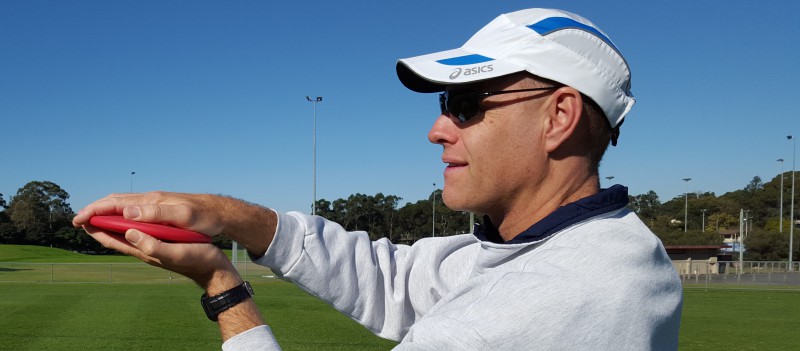10 Things That Will Help You Coach Triple Jump to Kids
Tip 1: Accelerate Right Up to the Take-Off Board
It is important to continuously build run-up speed all the way up to the take-off board. The speed at take-off and throughout the jump is one of the main determining factors of the triple jump performance. Encourage kids to run right up to and “through” the board. The run-up, however, is not a race, and the speed needs to be controlled and relaxed to ensure that an effective take-off can be made.
Tip 2: Simplify the Sequence
Triple jump is commonly known as an event in which the athlete performs a hop-step-jump sequence. After the initial take-off, the athlete lands on the SAME foot (hop), the OTHER foot (step), then BOTH feet (jump).
Use the cue of “same foot-other foot-both feet” (or “same-other-both”) to help the athlete to remember “hop-step-jump” sequence.
Tip 3: Maintain Speed Throughout the Jump
The triple jump can be thought of as three vigorous, driving take-offs. Many young athletes emphasise the hop take-off but don’t work hard enough during the step and jump take-offs. This causes the athlete to lose momentum as the jump progresses, leading to a trailing off of the horizontal speed, which negatively affects the overall distance achieved.
Tip 4: Focus on Even Phases
In the triple jump, the hop, step and jump phases should all be relatively even in length and rhythm. It is, however, common for young athletes to perform phases that are uneven in distance and rhythm. Even if an athlete is covering a good distance with this method, for the athlete’s ongoing development, it is important to encourage them to become familiar with the “feel” of a good triple jump rhythm. Markers next to the runway and landing pit to indicate desired landing points for the hop, step and jump phases be the visual cue to help to achieve this. A consistent rhythm means that each phase is being optimally used and combined into the best overall result. A rhythmic triple jump is more likely to result in the maintenance of horizontal speed and produce less braking force.
Tip 5: Hold Back on the Height of the Hop
Aim for a long, low hop. Kids often perform a hop that has too much height and distance. This causes them to come crashing down, land heavily and collapse. They struggle to recover from this position and have no momentum to launch into the step and jump.
Tip 6: Hop With the Heel Close to the Butt
After taking off, the thigh of the thigh of the hopping leg should be brought forwards and upwards, with heel coming up close to the butt. Kids will often make the mistake of trying to hop with a straight leg.
Tip 7: Bound NOT Step
Even though the triple jump sequence is often referred to as a hop-step-jump, the word “bound” better describes what needs to happen during the step phase. Young athletes need to work hard from the hop landing into the step, part of which is driving of the thigh of the free leg forward and upward. Otherwise, they tend to wastefully use the step phase to recover and rebalance following the hop before launching into the jump.
Tip 8: Hold Up the Head and Torso
Throughout the whole sequence, the head and torso should be kept upright. The tall sprinting action used during the run-up should be carried into the hop and maintained during the step and jump take-offs. Leaning excessively forward or backward can put the body in a weaker position. A tall posture helps with maintaining balance and in allowing a full range of leg motion during the phases.
Tip 9: Hop and Step Further with Flat-Foot Landings
The take-off into the hop and the landings from both the hop and step should be flat-footed in preference to occurring on the toes or the heel. Flat-footed ground contacts during these moments puts the body in a better position to continue to carry its momentum forward. Toe contacts can lead to unsteadiness and poor balance, which is detrimental when trying to generate forward force. Also, if an athlete contacts on pointed toes, the foot is already in a plantar-flexed (pointed) position on contacting the ground, taking away its ability to push off and drive the body into the next phase. Contacting on the heels can be like putting on the brakes which also makes it difficult to drive the body forward.
Tip 10: Heels Hit the Sand
The first contact with the sand in the landing pit should be with the heels. This helps an athlete to keep their feet up and away from the sand for longer. If a young athlete lands in the pit flat-footed or on their toes, it is is an indication that they have dropped their feet prematurely into the sand and lost therefore given away some distance.
Over To You!
What is your top quick and easy tip for teaching triple jump to kids? Share it here by leaving a comment/reply or let me know by using the contact details below.
Further Reading
3 Articles That Will Improve Your Triple Jump Coaching
Triple Jump Resource
Coaching Young Athletes Digital Resource:
Triple Jump Phase Landings Quick Reference Guide
If this post helped you please take a moment to help others by sharing it on social media. If you want to learn more I encourage you to leave questions and comments or contact me directly.
Darren Wensor is a sports development professional, coach educator, specialist coach of young athletes, and founder of the blog coachingyoungathletes.com. Learn more about him here and connect with him on Twitter, Facebook, Linkedin, or via email. Check out Coaching Young Athletes on YouTube, the Coaching Young Athletes podcast, and the Coaching Young Athletes E-Book Series.

